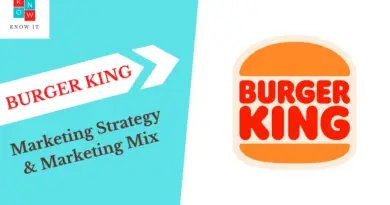Analyzing Zomato’s Business Strategy with the BCG Matrix
In the highly competitive food delivery industry, Zomato has emerged as a major player, revolutionizing the way people order food online. To understand Zomato’s position in the market and its growth prospects, we can employ a strategic analysis tool called the BCG Matrix. This matrix provides a visual representation of Zomato’s different business segments and helps identify areas of focus and potential for future growth.
What is the BCG Matrix?
The BCG Matrix, also known as the Boston Consulting Group Matrix, is a strategic analysis tool that categorizes a company’s business portfolio into four distinct categories: Stars, Question Marks, Cash Cows, and Dogs. Each category represents a different level of market growth and market share.

Zomato's Business Segments
Zomato operates in multiple business segments, which can be analyzed using the BCG Matrix. These segments include online food delivery, restaurant listings, and advertising. Let’s examine each segment and determine where Zomato stands in terms of market growth and market share.
Online Food Delivery
Zomato’s online food delivery service is its most prominent offering. With the increasing popularity of food delivery apps, this segment is experiencing rapid growth. Zomato’s extensive network of partner restaurants and efficient delivery system has helped it establish a strong position in this market. Thus, Zomato’s online food delivery segment can be classified as a “Star” in the BCG Matrix.
Restaurant Listings
Zomato’s restaurant listings provide users with comprehensive information about various eateries. This segment has a stable market share, but its growth potential may be limited. Hence, it can be considered a “Cash Cow” with a moderate growth rate.
Advertising
Zomato generates revenue through advertising by allowing restaurants to promote their offerings on its platform. This segment has significant growth potential, as more restaurants realize the value of targeted advertising. Therefore, it can be classified as a “Question Mark” in the BCG Matrix.
BCG Matrix of Zomato
Based on the BCG Matrix analysis, Zomato can develop specific strategies for each business segment:

Online Food Delivery (Star)
Since Zomato’s online food delivery segment is experiencing rapid growth, the company should focus on expanding its delivery network, improving user experience, and building strong relationships with partner restaurants. Continuous innovation and investment in technology will help Zomato maintain its competitive edge in this segment.
Restaurant Listings (Cash Cow)
While the restaurant listings segment may not have high growth potential, Zomato should still invest in keeping its database up to date and enhancing user experience. This will help sustain its market share and generate consistent revenue.
Advertising (Question Mark)
To capitalize on the growth potential of the advertising segment, Zomato should focus on expanding its customer base of restaurants. Offering targeted advertising options, analytics, and insights will attract more restaurants to advertise on the platform. Zomato can also explore partnerships with other businesses to expand its advertising reach.
Conclusion
Using the BCG Matrix, we have analyzed Zomato’s business segments and identified its online food delivery as a “Star,” restaurant listings as a “Cash Cow,” and advertising as a “Question Mark.” By developing targeted strategies for each segment, Zomato can maximize its growth potential and maintain its market leadership. It is important for Zomato to continuously monitor market dynamics, adapt its strategies, and invest in innovation to stay ahead in the competitive food delivery industry.




